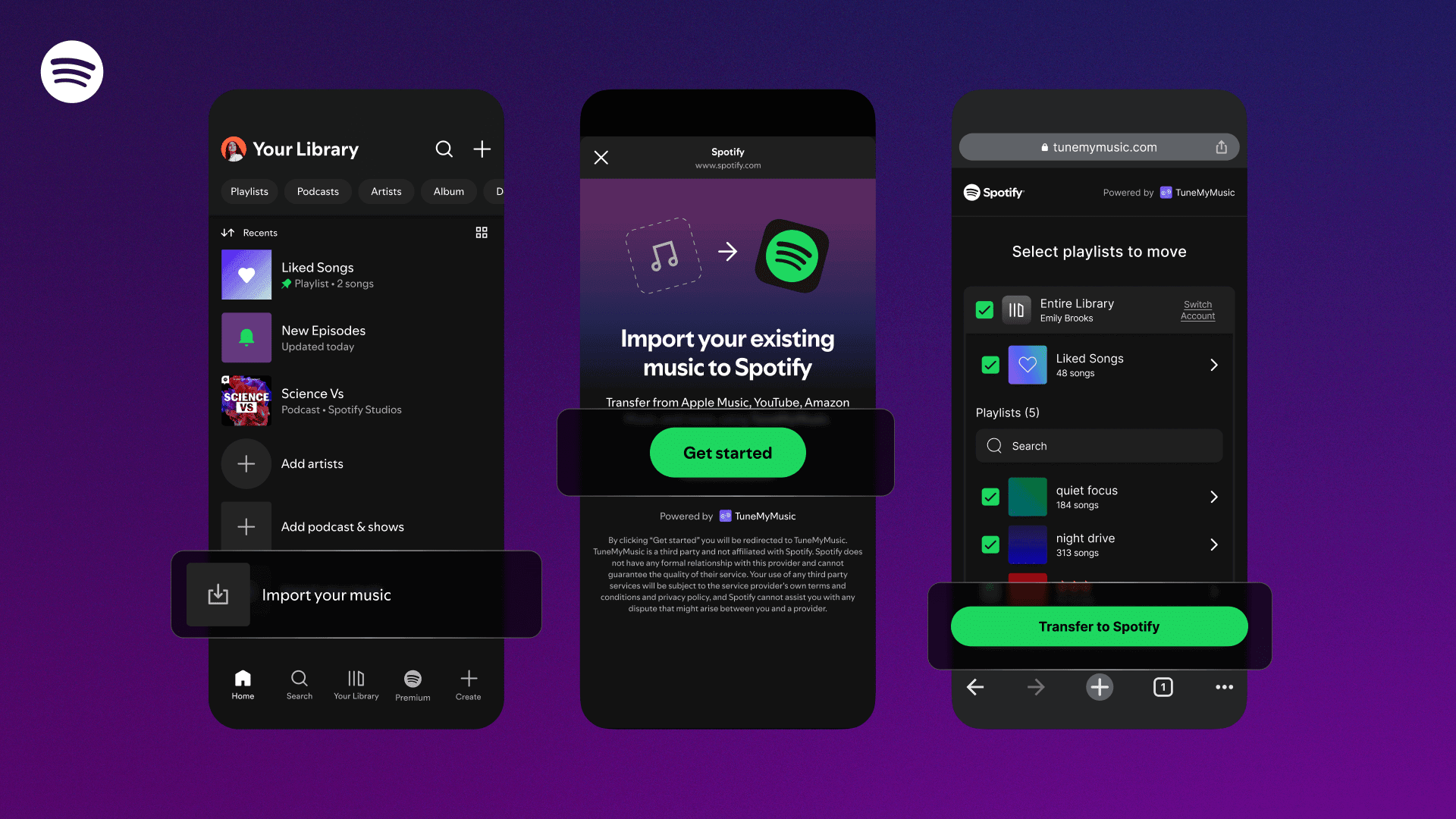Spotify just rolled out its own playlist import feature, letting users directly transfer their music libraries from competing services like Apple Music, Tidal, and YouTube Music. The timing isn't coincidental - this comes just months after Apple Music launched a similar tool in August, as streaming platforms battle for user loyalty amid growing artist boycotts and platform-switching trends.
Spotify is making its first serious move to poach users from rival streaming platforms. The company just launched a new playlist import feature that lets users transfer their entire music libraries from competitors like Apple Music, Tidal, and YouTube Music directly through the mobile app.
The timing tells a story. Back in August, Apple Music launched its own playlist import tool right as controversy swirled around Spotify CEO Daniel Ek's investments in defense technology. Artists like Deerhoof and Massive Attack were publicly fleeing the platform, creating an opening that Apple was quick to exploit.
Now Spotify is fighting back with its own user acquisition weapon. According to the company's official announcement, the feature integrates directly with TuneMyMusic, a third-party service that's been quietly powering playlist transfers between streaming platforms for years.
The integration matters because it removes friction. While users could always go directly to services like TuneMyMusic, Soundiiz, or SongShift (which powers Apple's import feature), these third-party tools often impose limits at the free tier - restricting how many playlists you can transfer or how long they can be.
By building the capability directly into its mobile app, Spotify offers unlimited transfers without subscription barriers. It's the same strategy Apple used with its August launch, recognizing that seamless user experience often trumps technical superiority in the streaming wars.
The move reveals how competitive the streaming landscape has become. Spotify commands the largest market share globally with over 500 million users, but has been gaining ground, particularly in premium markets. Meanwhile, services like Tidal, YouTube Music, and even revived players like Napster are carving out niches with high-quality audio and exclusive content.











